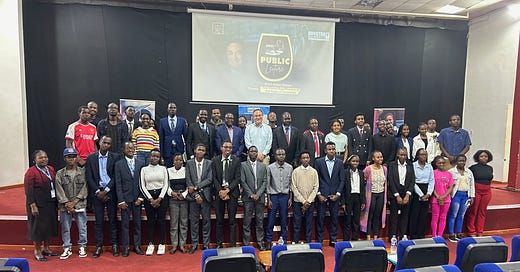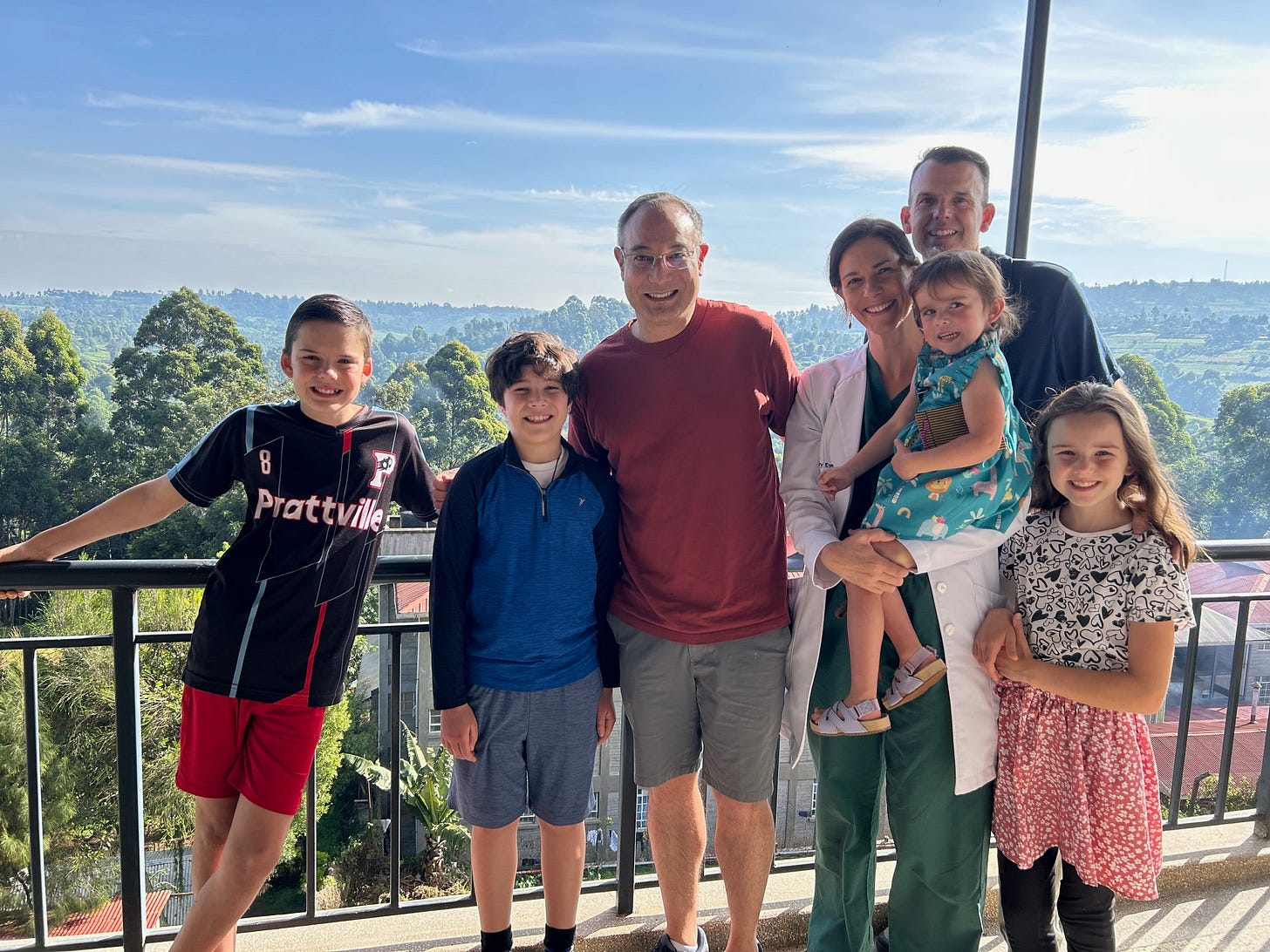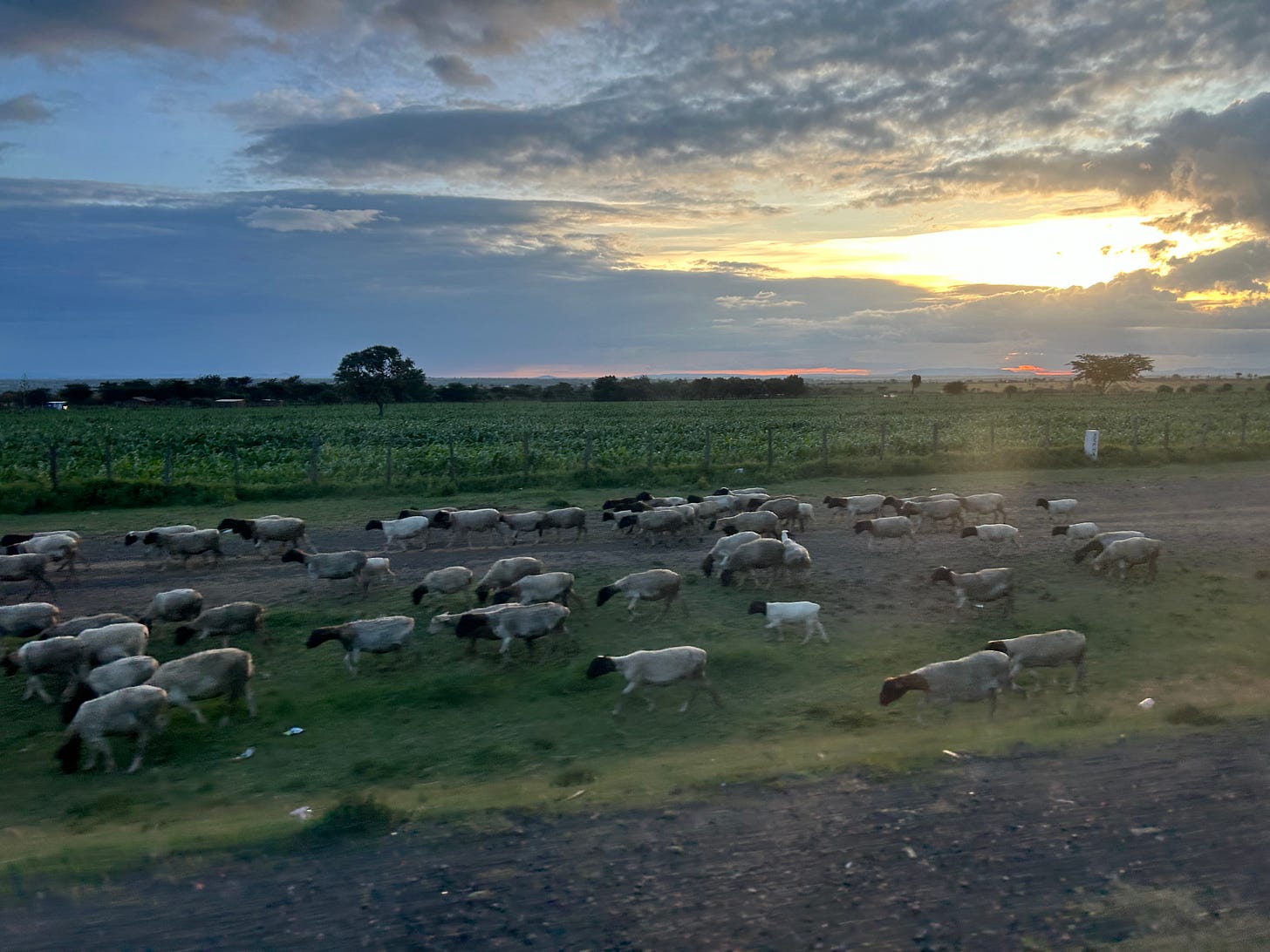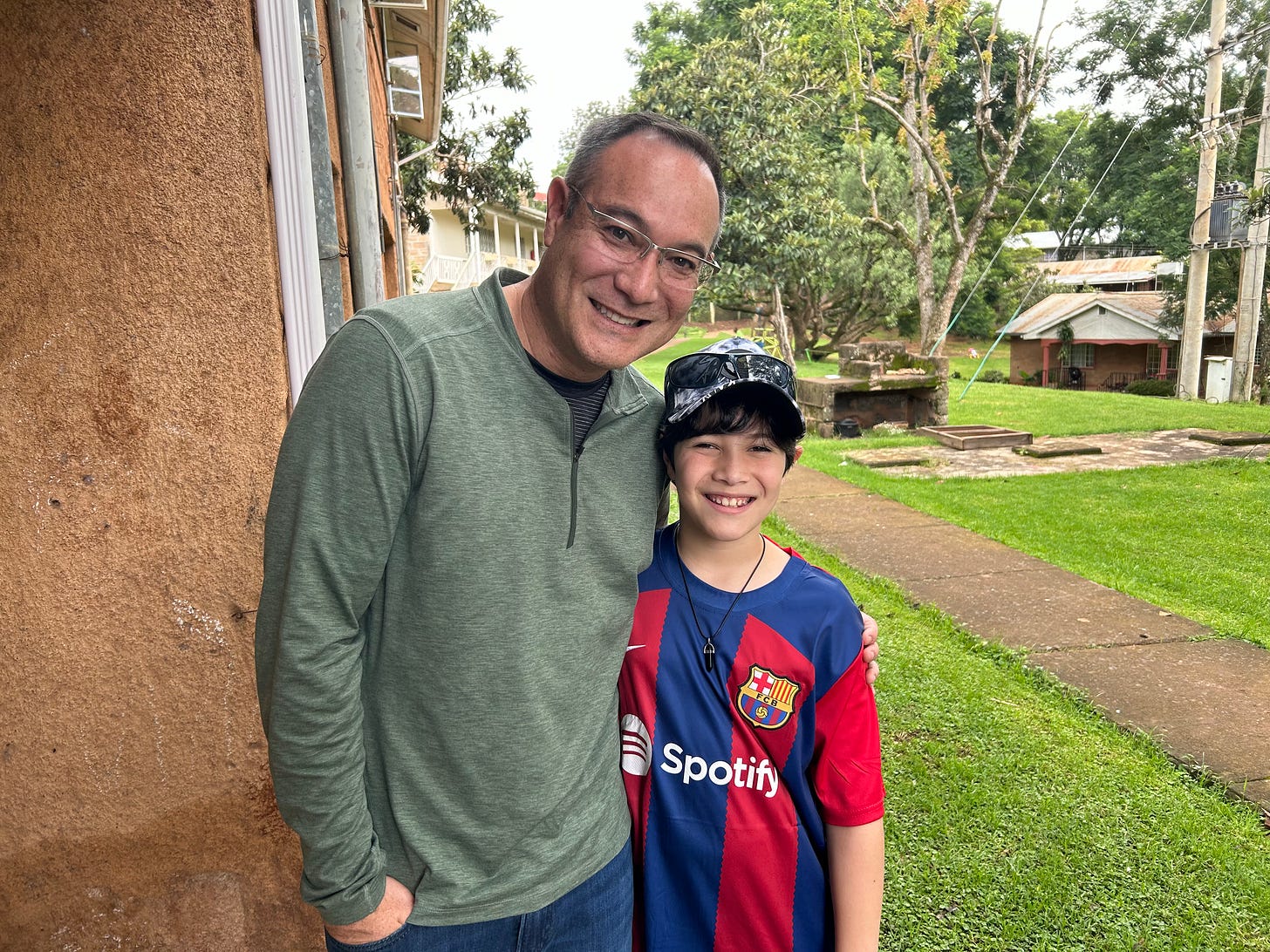Greetings from Nairobi!
My son Sam and I have spent the past week in Kenya visiting our friends the Donnithornes. Jeff Donnithorne and I met in eighth grade, were college roommates, and served together in the Air Force. His family is in Kenya for the year, where his wife Katherine has been volunteering as an ophthalmologist at Tenwek Hospital.
Today, I had the honor of addressing faculty and students at Daystar University, where I was invited to deliver a lecture on “The Global Significance of the Right of Assembly.” In preparing for this lecture, I learned a great deal about the importance—and the fragility—of Kenya’s commitment to the right of assembly. Today’s post summarizes some of the key points of my lecture. I begin with an overview of Kenya’s rights of assembly and association. I then explore some restrictions on those rights. And finally, I consider criminal and civil liability for unlawful assembly and related offenses.
The Kenyan Rights of Assembly and Association
The right to assembly is guaranteed in Kenya’s constitution. Similar to the U.S. assembly right, in Kenya, one can only assemble “peaceably.” The Kenyan constitution adds another qualification: Those participating in an assembly must be “unarmed.”
Unlike the U.S. Constitution, the Kenyan constitution also includes a broad and explicit “right to freedom of association” distinct from the right of assembly. It guarantees the freedom to “form, join or participate in the activities of an association of any kind.” This division between assembly and association has allowed Kenyan courts to develop two distinct lines of case law that usually distinguish between the two rights.
Section 24 of the Kenyan constitution allows restrictions of both assembly and association, but “only to the extent that the limitation is reasonable and justifiable in an open and democratic society based on human dignity, equality and freedom.” In practice, this provision creates a multi-factor balancing test.
Restrictions on Assembly and Association
In addition to restrictions pursuant to Section 24, Kenyan assembly law allows for limitations akin to the time, place, and manner restrictions permitted under U.S. public forum doctrine (which I critiqued in an earlier post). For example, in a 2017 case, Boniface Mwangi v. Inspector General of Police, a group of political dissidents petitioned to hold a rally outside the gates to State House, the president’s official residence. The court upheld the denial of the request, noting that the protesters could instead assemble outside the president’s office.
Similarly, the court showed its willingness to temporally limit the right of assembly in a 2016 decision, Ferdinand Ndung’u Waititu v. Attorney General. The case involved election protesters asserting their right to assemble. While the court ultimately allowed the protesters to assemble in some form, the judge wrote, “The time chosen for the picketing, assembly or demonstration ought to be reasonable as well. There is no doubt that statute may occasionally draw picket-lines and designate no go zones for demonstrators and picketers.”
The court’s justification in Ferdinand relied heavily on Kenya’s Public Order Act, which predates its 2010 constitution. The Act provides:
Any person intending to convene a public meeting or a public procession shall notify the regulating officer of such intent at least three days but not more than fourteen days before the proposed date of the public meeting or procession. If proper notice is not given, the assembly is deemed unlawful.
This requirement, which Kenyan courts have upheld under Section 24, conceivably gives the government broad discretion to regulate assemblies. For one thing, the Act fails to specify any minimum size of the assembly. Technically, if my son Sam and I met on the streets of Nairobi to pray together in public without providing the regulating officer with timely notice, we would be in violation of the Public Order Act.
The Act’s notice requirement also inhibits the organization of spontaneous protests. By functionally prohibiting any protest of a government action within three days of its being announced, this time restriction can dampen the political and social efficacy of a protest against a new government policy.
Similar to the treatment of the assembly right under Kenyan law, Kenya’s right of association has also faced restrictions in practice. The Kenyan constitution guarantees the right to join “an association of any kind” (emphasis added). The seemingly absolute textual guarantee is limited, like the right of assembly, by Section 24 of Kenya’s constitution. Indeed, last August, the Kenyan government banned five churches associated with cult leader Paul Nthenge Mackenzie. Mackenzie’s churches represent a particular heinous form of association—he is currently on trial for the deaths of 400 of his congregants (including 191 children) who adhered to his message that salvation comes from starvation.
On the other hand, Kenyan courts have also meaningfully protected associational rights against majoritarian rights, sometimes better than the vague and unspecified contours of the U.S. right of association. For example, a 2013 decision, EG v. Non-Governmental Organizations Coordination Board, protected the formation of a gay rights advocacy organization. The court reversed the government’s decision to restrict the association, writing: “Freedom of association is universally accepted as fundamental to a democratic society. The principles of pluralism and democracy necessitate that all citizens be free to assemble and express their opinions, and be limited in their ability to do so only by very narrow and specific circumstances.”
Unlawful Assembly
Another limitation on Kenya’s right to assemble is that it does not extend to unlawful assemblies. The Kenyan Penal Code provides:
Where three or more persons, being assembled with the intent to carry out some common purpose, conduct themselves in such a manner as to cause persons in the neighbourhood reasonably to fear that the persons so assembled will commit a breach of the peace, or will by such assembly needlessly and without reasonable occasion provoke other persons to commit a breach of the peace.
Unsurprisingly, many of the statutory phrases draw from British common law antecedents and raise similar ambiguities to those present in U.S. unlawful assembly statutes. As I argued in a 2017 article in the UCLA Law Review, “Unlawful Assembly as Social Control,” phrases like “persons in the neighborhood,” “reasonable fear,” and even “breach of peace” can be highly subjective standards that default too heavily to judgments by local law enforcement.
One of the few recent decisions to explore the meaning of “breach of peace” under Kenyan law is the 2017 case, Hussein Khalid vs AG. Protesters outside of parliament had received permission to engage in a public assembly. The assembly began orderly but protesters eventually released pigs and animal blood as symbols of the government’s greed. The government arrested the protesters for unlawful assembly. On appeal, the government argued that “offensive conduct” can constitute breach of peace. Without directly ruling on that interpretation (in what appears to be a form of constitutional avoidance), the high court permitted the prosecution as consistent with the Section 24 limitations.
Liability for Assembly Organizers
One final comparative note revolves around potential vicarious liability for protest organizers. In an earlier post, I wrote about my concern for the Fifth Circuit’s emerging theory of “negligent protest,” and its potential chilling effect on protest organizers.
In Kenya, the Public Order Act holds organizers criminally responsible for unlawful assemblies that their group takes part in even if the organizers themselves were not present. The Kenyan high court has also addressed civil liability for violence or property damage resulting from protests that turn violent. In the 2019 decision, Ngunjiri Wambugu v. Inspector General of Police, the court ordered the attorney general, inspector general of police, and interior secretary to create a code of conduct to “provide a clear line of responsibility of who is liable in case of loss to life or property, or for injury, when a member of the public is aggrieved due to such demonstration.”
Following the ruling, a member of Kenyan parliament drafted and proposed a bill to amend the Public Order Act. Although the bill was not ultimately adopted, it would have allowed courts to order “the organizer [to] compensate the affected persons on such terms as the court may deem proper to grant,” even when the injury or property damage to affected persons were not caused by the organizer. As in the U.S. context, this broad civil liability could well have a chilling effect on protest organizers.
Final Thoughts
I am grateful to the Donnithornes and my Kenyan hosts. At Daystar, Dean Maurice Owuor and Professor Martin Oloo provided an incredibly hospitable welcome. Until recently, most of my exploration of the right of assembly has been limited to the U.S. context and its British antecedents. This past year, I broadened my understanding of global assembly rights through a chapter that I contributed to The Oxford Handbook of Peaceful Assembly. Today’s lecture in Nairobi provided a wonderful opportunity for an even deeper comparative assessment.
On a less academic note, here are a few pictures from our Kenya journey:









